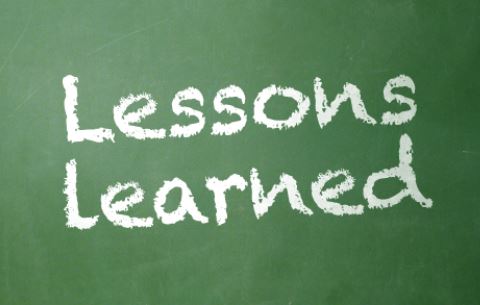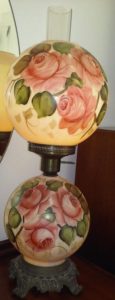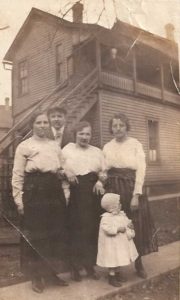
Genealogy at Heart has returned! After driving over 1100 miles twice last month and closing on our home two days ago, we are ready to return to our passion – Genealogy.
Relocating is fraught with pitfalls, stress-filled, and physically demanding. It is also an exciting new life adventure, educational, and invigorating. Flexibility is key. Here are some lessons I learned from my recent cross-country move that apply to genealogy. . .
My first thought about my family’s ancestors came about when we were loading a very smelly, rusty old trunk into the Pod. It belonged to my husband’s great-great grandparents who emigrated with their five children from Sweden to Indiana in 1851. The family had three trunks, the largest one was handed down to us; my husband’s sibling has the two smaller ones. Those three trunks held all the belongings of the seven family members.
As we lugged it out of the garage I remarked to my husband how amazing it was for them to fit all of their belongings into those three trunks. Our family of four households had five Pods, one truck, and two filled cars. As we sweated under the Florida sun, hubby said it would have been a whole lot cheaper and less strenuous if we had followed in his ancestor’s footsteps. Could be but immigrating back in the day was also costly; travel to ports, the cost of the ship’s fare, and the long journey that lay ahead weren’t easy.
Hubby and I are returning to the state where we were born and raised. We understand the customs, culture, and language. Many of our ancestors had to learn all of those while re-settling. I can’t even imagine how difficult it must have been. No wonder why a family moved together and located close to former friends and neighbors who had come earlier.
I had reached out to distant family who I have made contact through family research and asked them for their input as to where we should reside. It’s been nearly 50 years since I lived in my new location and obviously, things have changed. We found their information quite valuable. It never dawned on me to investigate why my ancestors selected a particular location or who helped them when they arrived. That’s something I’d like to do in the future.
I’d also like to research in-depth the transportation methods and routes. Sure, I know the ship’s name but I never took the time to really find out about it. I’ll be looking at the manifest to see how many were traveling from an area close to where my family had left, the size of the vessel, the days in transit, and so on. While we were fortunate to have interstates our trip was not easy. There was a flat tire, overheated vehicles (it was so HOT the day we left!), GPS glitches, construction, congestion, fog, the smoke-filled road from a fire, long stretches without a gas station, and exhaustion. Since hubby was driving the truck, we had to fly back to Florida to retrieve his vehicle and do the drive a second time. We had difficulty getting a flight and finding an Uber when we arrived as the plane had been delayed and it was then the wee hours of the morning. What obstacles did my ancestors encounter? I have no idea.
While packing, I realized that my family heirlooms were now returning to where they originated. I wanted to insure they’d arrive unscathed so I wrapped them well. I’m pleased to report that the few older pieces of china arrived safely. I can’t say that the furniture came in great condition. It never dawned on me that the heat, humidity, and movement would bring out nicks and scratches. The pieces were all bundled in blankets but that probably just made them hotter. I was able to salvage all but our bedroom set by bringing them into an air-conditioned home. I didn’t touch them for a week thinking they needed to acclimate as we did. Then I took a rag and went over them with Howard’s, a product I used in Florida. I had purchased it at an antique store but found it in my new area at Home Depot and Ace Hardware. It restored the luster and hid the blemishes, thankfully.
We have decided to downsize so our new home is much smaller than our last. It was a wonderful time to pass down heirlooms to the next generation who just happened to buy a larger home. Since we live less than five minutes from each other, I can still see them and enjoy using them on holidays. It is an odd feeling, though, to give them up. I guess I’m more of a material girl than I thought! It is comforting knowing they are in good hands for future generations.
Our physical move to our new home takes place next weekend so pardon me if my blog is delayed. I’m hopeful by the end of the month I’ll be back in the genealogy groove.








